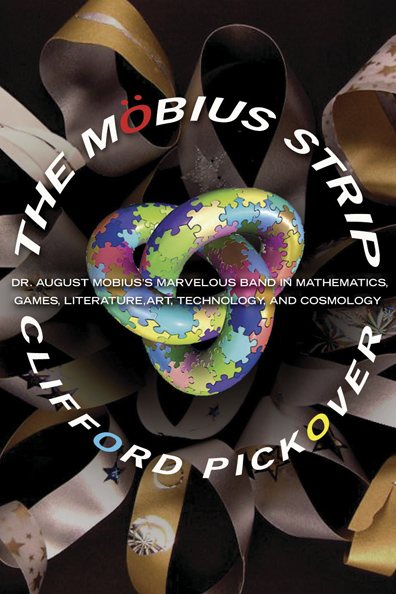Powers of Phi
We return to the definition of Phi, as the positive valued solution to
P(P-1)=1
P here is either of 2 values, Phi and 1-Phi.
So P has the property that P2=P+1.
Let's look at Phi2 first.
Phi squared
We can read the equation above as to find P2, just add 1 to P.
Things to do
-Use your calculator to evaluate Phi=(1+5)/2. If you have a Memory on your calculator, store this value in it.
-Square it and check that it is just Phi+1 (i.e. subtract one and compare with the Memory value).
-Use your calculator to evaluate the other value (1-Phi) or (1-Memory) = (1-5)/2
-Again square the value just found and check that it is just the same as adding 1 to the value you squared.
Now let's look at Phi3.
Phi cubed
Is there another way to calculate Phi3 apart from just Phi x Phi x Phi?
Yes - let's see how to compute it in two more ways. We use the basic P(P-1)=1 formula or, in another form, P2=P+1.
P3 is just P.P2 = P(P+1) by our "basic formula", which expands to P2+P
...now that's interesting!... 1 + P = P2 AND P + P2 = P3 ...hmmm! Is there anything in this do you think?
Question: How could this be generalized? We'll use this result in the next sub-section about a Phi-bonacci Brick... but, for now, let's get back to the original equation...
and P2 + P = (P+1) + P after using the "basic formula" again and this is just 2P + 1. So
Phi3 = 1 + 2 Phi
Notice that this needs just one multiplication rather than two if we evaluated Phi x Phi x Phi. That's the first quick way.
The second answer was spotted by Scott Beach but it is also in the table at the foot of this page: since Phi=(√5+1)/2 then 2Phi is √5+1 and 1+ 2 Phi = &radic 5 + 2:
Phi3 = 2 + √5
Interesting Facts about a Phi-bonacci Brick

[This variation was suggested by Hud Nordin of Sunnyvale, California.]
If we have a brick with sides of lengths 1, Phi=1·61803... and phi=1/Phi=0·61803... then:-
the longest side is the sum of the other two lengths since 1 + phi = Phi
the largest face (area C=1 x Phi) is the sum of the other two face's areas (area A =1 x phi and area B=phi x Phi) since
Area A + Area B
= 1 x phi + phi x Phi
= phi + 1
= Phi
= Area C
The next three interesting facts and figures on the Phibonacci brick were first pointed out by Donald Seitz in The Mathematics Teacher, 1986, pages 340-341 in an article entitled A Geometric Figure Relating the Golden Ratio to Pi.
What is the surface area S of the brick?
Above we saw that the sum of the 2 smaller face's areas equals the largest face's area, and that this is Phi.
Since there are 2 faces with smallest area, 2 of middle-sized area (which total 2 times the largest face area, that is 2 Phi) and we also have two other faces of the largest area (Phi) , then:
The surface area of the brick is 4 Phi
How long is the diagonal across the brick?
 Another surprise
Another surprise awaits us when we calculate the length of the diagonal across the brick.
The formula is a 3-dimensional analogue of Pythagoras Theorem.
For a rectangle of sides x and y, its diagonal is (x2 + y2).
For a 3-D brick with sides x,y and z, its diagonal has length (x2 + y2 + z2).
So how long is the diagonal of our Phi-bonacci brick? Since its sides (x,y and z) are 1, Phi and phi, the length of its diagonal is: (12 + Phi2 + phi2). I'll leave you to check the algebra but the surprisingly simple answer is
The diagonal of the brick has length 2
A relationship between Phi and Pi
just a
......Quote
TruthSeeker7
http://www.godlikeproductions.com/fo...ge454148/pg296
Quote:
TruthSeeker7
User ID: 384266
3/3/2008 2:07 AM Re: 17P/Holmes - Enigma 'Comet' is back in the night skies!
QUOTE
A great sign from the heavens is due. No doubt about it. One final last great sign.
57th TONY AWARDS MAN OF LA MANCHA
[link to youtube.com]
And who knows for sure. Maybe "comet" Holmes is not done.
the above video is about a dream i had and the sign from the heavens.[/QUOTE]
Quoting: * <----star of destiny
Thank you for that
A song for the hero in all of us.
It takes great courage just to live in this day and age.
|

a nu n
all i
s repeated
^n-time ...now
mobius-book.....
 We Have Died and Gone to Mobius
We Have Died and Gone to Mobius ...

or is it from REaM to bbiooas?